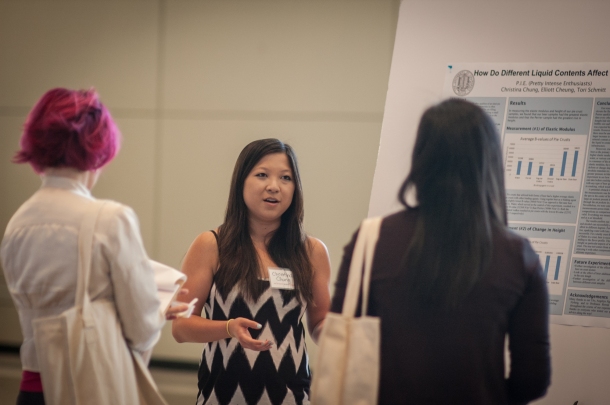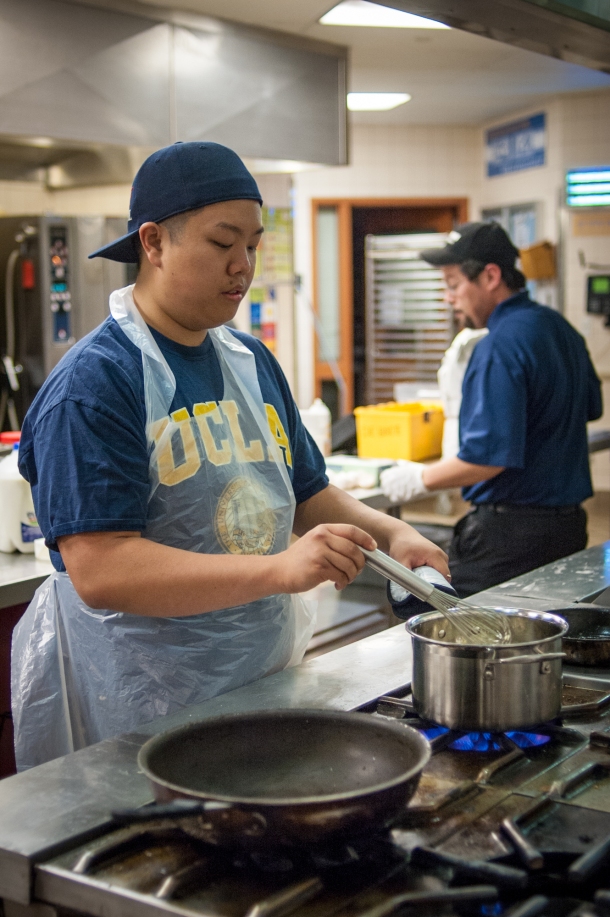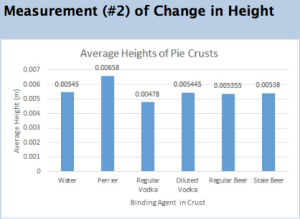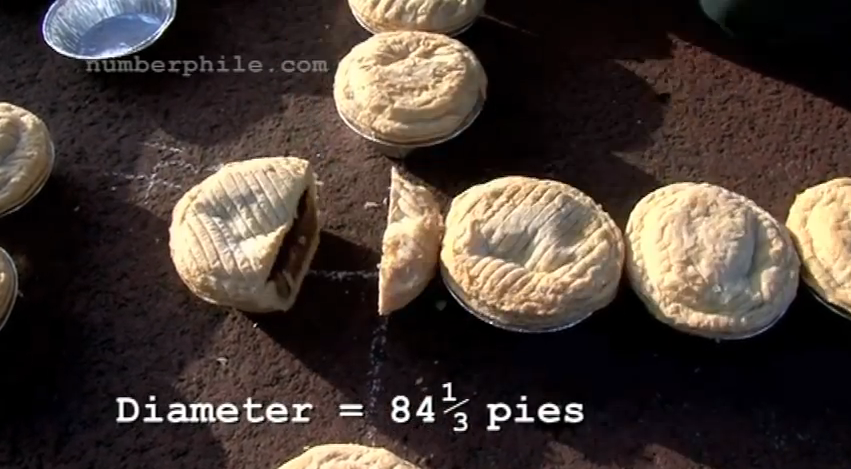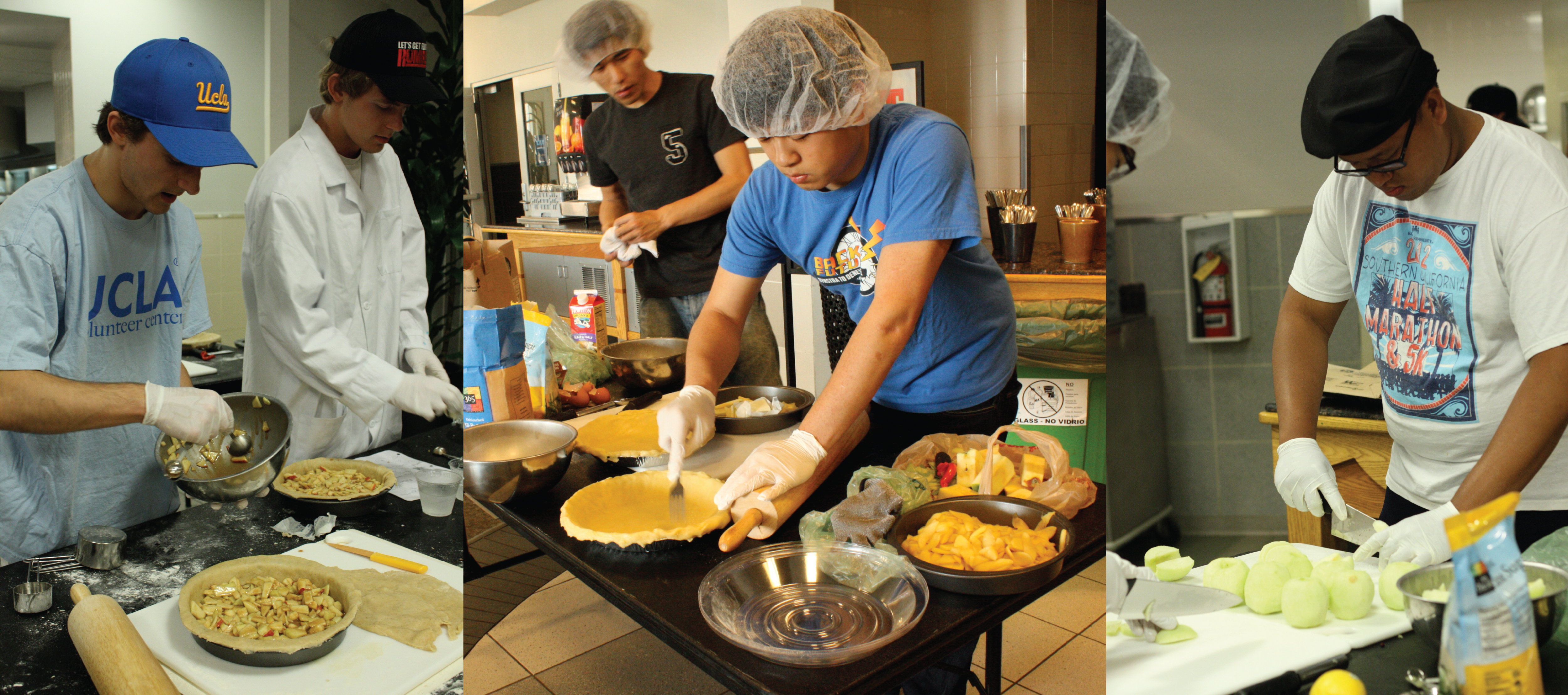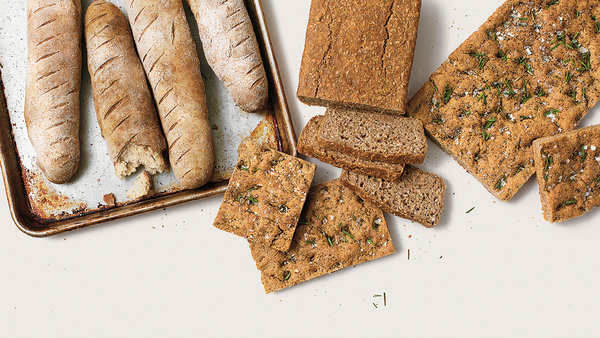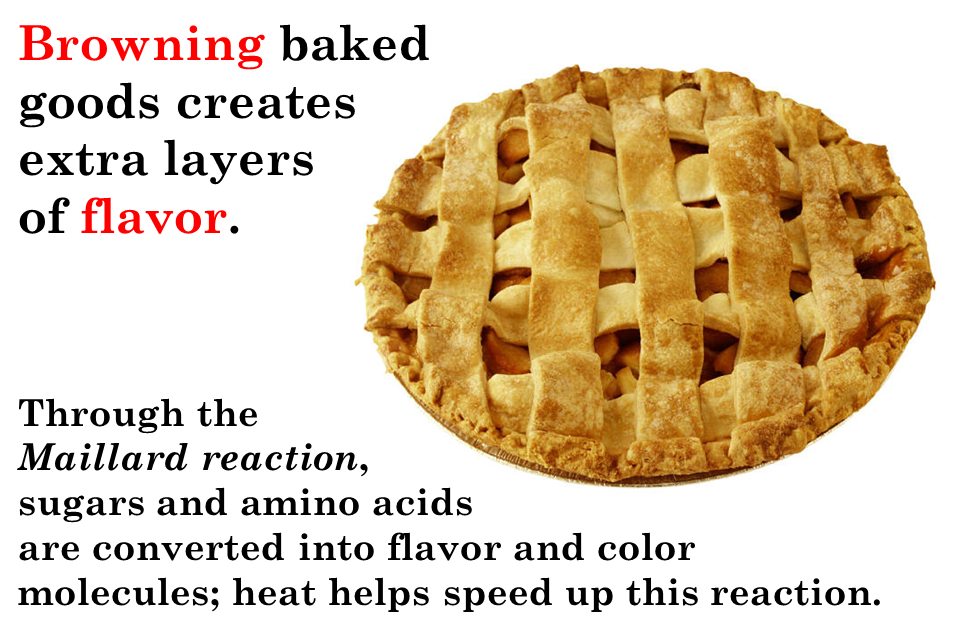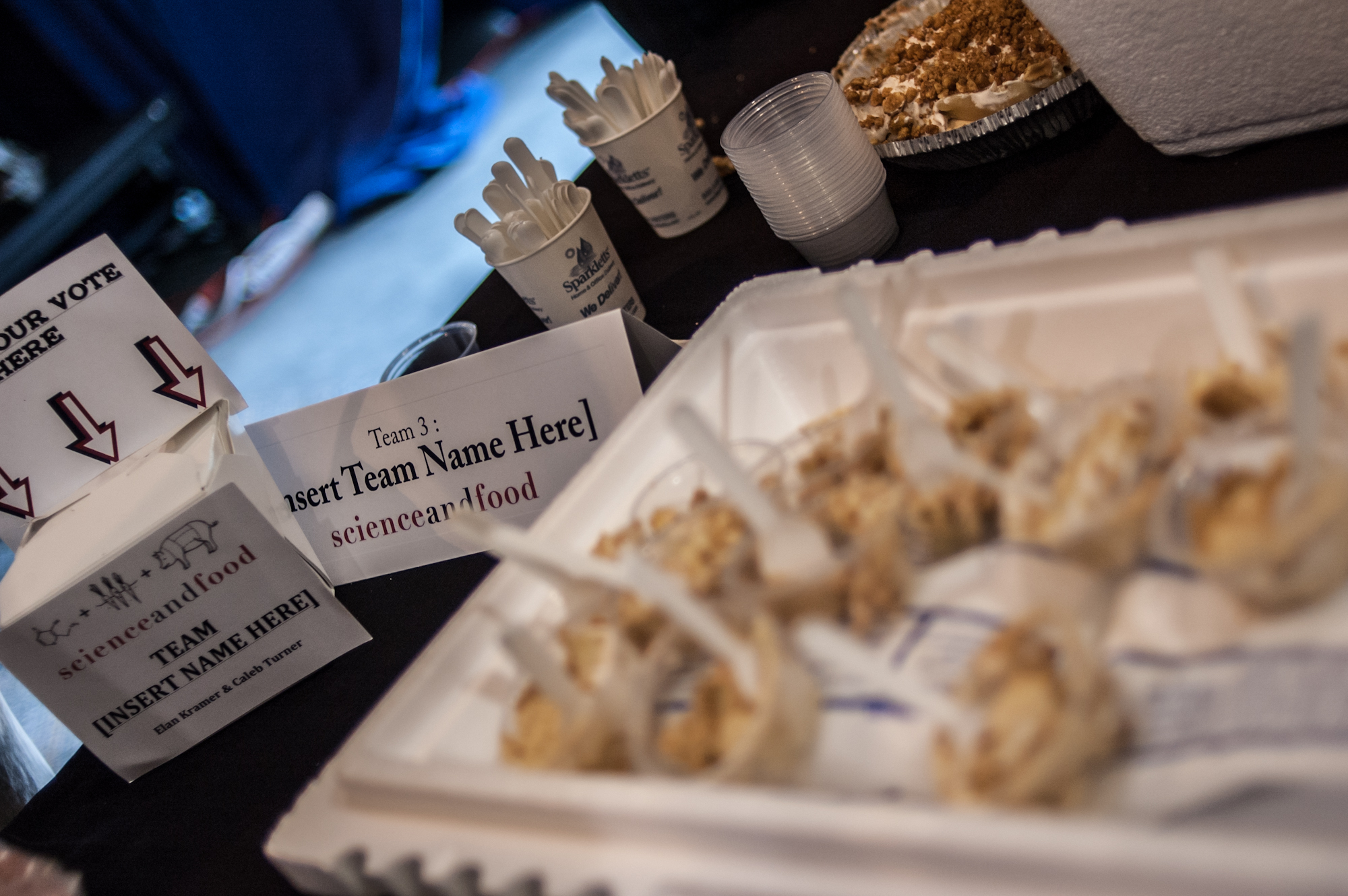Beer Crust Apple Pie
The Science of Pie – June 1, 2014
Best Scientific Pie
Christina Cheung, Tori Schmitt, and Elliot Cheung (Team Pretty Intense Pie Enthusiasts)
Adding alcohol to a pie crust is a fairly mainstream way of obtaining a nice flaky shelter for a delicious filling within. Vodka is the go-to spirit for crusts, but other beverages have found their way into the realm of apple pies too. One team at the 2014 Scientific Bake-Off, team P.I.E. (Pretty Intense Pie Enthusiasts), was intrigued by the plethora of alcoholic options available to them for pie crusts, and chose to use their scientific prowess to determine the best choice. Two variables guided their experiment: how do carbonation and alcohol concentration affect the flakiness of a pie crust?
Team P.I.E. began by making six experimental crust doughs, each containing either water, beer, stale beer, diluted vodka, regular vodka, and Perrier. To measure flakiness, a quality difficult to quantify, they compared the average height for each baked pie dough to indicate how much the dough has risen during baking. To account for bubbles, height measurements were taken at the center and edges of the crust.
These pie researchers calculated the elastic modulus of each crust to further quantify flakiness. Elastic modulus of a substance is the ratio of the stress applied to the resulting strain. This ratio can be thought of as a measure of stiffness, or in our case, flakiness, as the flakiest crust will break the most easily.
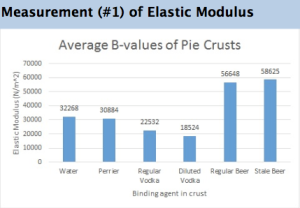
Pie crusts that utilized both forms of beer had a higher average elastic moduli than crusts with other binding agents.
They administered force to their crusts by using a pen to mimic the conditions of fork prongs stabbing a pie crust. Measured values of water balanced atop the pen acted as a weight to provide precise values of force.
Through this extensive research, P.I.E. presented data that showed that a pie crust made with Perrier sparkling water created a significantly thicker crust than one made with any of the other experimental liquids. All the other crusts surprisingly rose to very similar heights. Since P.I.E had observed similar bubble size and bubble concentration in Perrier and beer, they expected that the regular beer crust would yield similar data to the Perrier crust. However, the significant difference between the measured values of Perrier and beer imply a confounding factor in the experimental comparison. They speculate that Perrier’s high mineral content could alter the vaporization temperature of the liquid, and thus affect the creation of air bubbles and the dough’s infrastructure.
The dedication to detail and the scientific method paid off for these three scientists, as the panel of esteemed judges awarded them the title of “Best Scientific Pie”. As this was a scientific bake off, that is a pretty high honor to hold. Congratulations to the Pretty Intense Pie Enthusiasts, and we thank you for your deliciously scientific dessert!
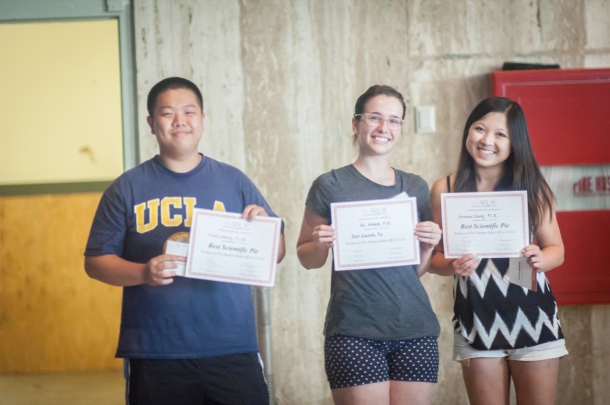
Christina Cheung, Tori Schmitt, and Elliot Cheung accept their awards for Best Scientific Pie (Photo Credits: Patrick Tran)
Recipe
Beer Crust Apple Pie
(Makes two full pies)
For crust:
- 5 cups flour
- 2 TB sugar
- 2 t salt
- 4 sticks chilled butter
- 1/2 to 1 cup cold beer (we used Blue Moon, but any pale ale works here)
Combine flour, sugar, and salt in a large bowl. (if making full recipe will require a very large bowl) Cut chilled butter into cubes and cut into flour mixture with a fork or pastry cutter. The flakes can vary in texture but absolutely no butter cubes should remain intact. The mixture will resemble corse sand. Measure out beer starting at 1/2 cup. Pour in and incorporate into dough. If dough is still dry, incorporate more beer in until the dough is just moist enough to stick together. Wrap dough in saran and refrigerate for at least 30 minutes, up to overnight.
For Filling and Assembly:
- 8 large apples (we used a mixture of granny smith and pink lady)
- 1 cup sugar
- 6 tablespoons flour
- salt and cinnamon to taste
- Lemon zest (roughly 2 TB)
- one bottle of beer or hard apple cider
- egg white to brush the top with
- 1/2-3/4 cup of shredded gruyere cheese
To prep the filling, core and peel all your apples and soak them in enough beer and/or hard cider to cover for 1-2 hours or until the apples are infused to taste. Pour out liquid and reserve for reduction sauce later. Be sure to remove all the liquid from the bowl and allow the apples to dry for roughly 30-45 minutes. The apples will look significantly less “wet” after the drying period. After the apples are dry, combine them with flour, sugar, lemon zest, cinnamon, and salt. Depending on the sweetness of your hard cider/beer, you may need to adjust the amount of sugar used.
Assembly:
Pre-heat home oven to 500 degrees. Section pre-chilled pie dough into four equal segments and roll out two of the pie dough segments. Place these over buttered glass pie dishes and fold into place. Split filling evenly and pour into each dish. Dot top of apples if additional butter if desired (roughly 1 TB per pie). Roll out the remaining pie crust into two top pieces. Sprinkle each top pie with an equal amount of cheese. Cheese amount will depend on strength and personal preference for cheese. Flour pin well and lightly roll/ press cheese gently into the crust (dough will be very flaky). Lay top crust evenly over pie with cheese side facing up. Crimp edges and brush with egg whites.
To bake the pie. place and oven and lower temp to 425 degrees F. Bake at this temp for 25 minutes at which point, rotate the pie and lower temp to 375 for an additional 30-35 minutes. This will produce a pie with softer apples. Alternatively the pie can be baked at 375 for a full hour, however the apples may remain more al dente. (Pie was baked in the second way for competition)
 About the author: Elsbeth Sites is pursuing her B.S. in Biology at UCLA. Her addiction to the Food Network has developed into a love of learning about the science behind food.
About the author: Elsbeth Sites is pursuing her B.S. in Biology at UCLA. Her addiction to the Food Network has developed into a love of learning about the science behind food.

